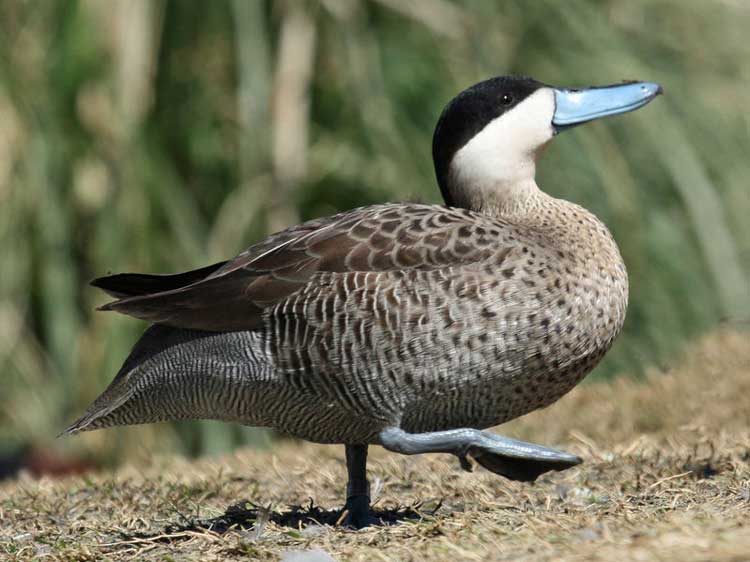
Spatula puna (*)
Superregnum: Eukaryota
Cladus: Unikonta
Cladus: Opisthokonta
Cladus: Holozoa
Regnum: Animalia
Subregnum: Eumetazoa
Cladus: Bilateria
Cladus: Nephrozoa
Superphylum: Deuterostomia
Phylum: Chordata
Subphylum: Vertebrata
Infraphylum: Gnathostomata
Megaclassis: Osteichthyes
Cladus: Sarcopterygii
Cladus: Rhipidistia
Cladus: Tetrapodomorpha
Cladus: Eotetrapodiformes
Cladus: Elpistostegalia
Superclassis: Tetrapoda
Cladus: Reptiliomorpha
Cladus: Amniota
Classis: Reptilia
Cladus: Eureptilia
Cladus: Romeriida
Subclassis: Diapsida
Cladus: Sauria
Infraclassis: Archosauromorpha
Cladus: Crurotarsi
Divisio: Archosauria
Cladus: Avemetatarsalia
Cladus: Ornithodira
Subtaxon: Dinosauromorpha
Cladus: Dinosauriformes
Cladus: Dracohors
Cladus: Dinosauria
Ordo: Saurischia
Cladus: Eusaurischia
Subordo: Theropoda
Cladus: Neotheropoda
Cladus: Averostra
Cladus: Tetanurae
Cladus: Avetheropoda
Cladus: Coelurosauria
Cladus: Tyrannoraptora
Cladus: Maniraptoromorpha
Cladus: Maniraptoriformes
Cladus: Maniraptora
Cladus: Pennaraptora
Cladus: Paraves
Cladus: Eumaniraptora
Cladus: Avialae
Infraclassis: Aves
Cladus: Euavialae
Cladus: Avebrevicauda
Cladus: Pygostylia
Cladus: Ornithothoraces
Cladus: Ornithuromorpha
Cladus: Carinatae
Parvclassis: Neornithes
Cohors: Neognathae
Cladus: Pangalloanserae
Cladus: Galloanseres
Ordo: Anseriformes
Familia: Anatidae
Genus: Spatula
Species: Spatula puna
Name
Spatula puna (Tschudi, 1844)
Synonymy
Anas puna (protonym)
References
Tschudi, J. J. von 1844. Avium conspectus quae in Republica Peruana reperiuntur et pleraeque observatae vel collectae sunt in itinere. Archiv für Naturgeschichte 10 (1): 262-317. Nicholai'schen Buchhandlung. Berlin. : 315 BHL Reference page.
Vernacular names
brezhoneg: Kragell Puna
català: Xarxet de la puna
Cymraeg: Corhwyaden puna
dansk: Punaand
Deutsch: Punaente
English: Puna Teal
Esperanto: Punaa kreko
español: Pato puna
فارسی: خوتکای پونا
français: Sarcelle du puna
magyar: Ezüstcsőrű réce
italiano: Alzavola della puna
日本語: プナシマアジ
кырык мары: Пуна аргек
Plattdüütsch: Punaaante
Nederlands: Punataling
norsk: Punaand
Runa Simi: Yuksa
русский: Чирок пуны
svenska: Punaand
中文: 安地斯銀鴨
The Puna teal (Spatula puna) is a species of dabbling duck in the family Anatidae. It was at one time regarded as a subspecies of the silver teal.
The Puna teal is resident in the Andes of Peru, western Bolivia, northern Chile, and extreme northwestern Argentina.[1][2] It is found on the larger lakes and pools in the altiplano.
The status of the Puna teal is Least Concern, as listed on the IUCN Red List.[1]
Taxonomy
The first formal description of the Puna teal was by the Swiss naturalist Johann Jakob von Tschudi in 1844 under the binomial name Anas puna.[3] It was at one time considered as a subspecies of the silver teal in the genus Anas.[4] A molecular phylogentic study comparing mitochondrial DNA sequences published in 2009 found that the genus Anas, as then defined, was non-monophyletic.[5] The genus was subsequently split into four monophyletic genera with ten species including the Puna teal moved into the resurrected genus Spatula.[6] This genus had been originally proposed by the German zoologist Friedrich Boie in 1822.[7][8] The name Spatula is the Latin for a "spoon" or "spatula". The specific epithet puna is from the Puna de Atacama, a plateau in the Andes.[9]
Description
At WWT Slimbridge, England
The Puna teal is 19 inches (480 mm) long, similar in size to a wood duck. They have a black cap that extends to below the eyes. Their lower face and neck are creamy white. Their upper tail coverts are gray, and their rear flanks are dark brown with thin stripes. Back, chest and lower flanks are light coffee with dark brown spots. Their bill is large, light blue with a black line down the middle.
Behaviour
Anas puna - MHNT
In the wild they live in small groups of their own kind or with the closely related silver teal. Puna teal lay their eggs between April and June. Like swans and geese both parents rear the ducklings. They lay their eggs in long grass, not always close to the water. The eggs are a creamy pink colour of which there may be several. The relationship between the male and female may be long term.[10]
References
BirdLife International (2016). "Spatula puna". IUCN Red List of Threatened Species. 2016: e.T22680326A92855733. doi:10.2305/IUCN.UK.2016-3.RLTS.T22680326A92855733.en. Retrieved 25 September 2021.
Clements, J. (2007)
Tschudi, Johann Jakob von (1844). "Avium conspectus". Archiv für Naturgeschichte. 10 Part 1: 262–317 [315–316].
Mayr, Ernst; Cottrell, G. William, eds. (1979). Check-list of Birds of the World. Vol. 1 (2nd ed.). Cambridge, Massachusetts: Museum of Comparative Zoology. p. 475.
Gonzalez, J.; Düttmann, H.; Wink, M. (2009). "Phylogenetic relationships based on two mitochondrial genes and hybridization patterns in Anatidae". Journal of Zoology. 279 (3): 310–318. doi:10.1111/j.1469-7998.2009.00622.x.
Gill, Frank; Donsker, David, eds. (2017). "Screamers, ducks, geese & swans". World Bird List Version 7.3. International Ornithologists' Union. Retrieved 23 July 2017.
Boie, Friedrich (1822). "Generalübersicht". Isis von Oken (in German). Col 564.
Mayr, Ernst; Cottrell, G. William, eds. (1979). Check-list of Birds of the World. Vol. 1 (2nd ed.). Cambridge, Massachusetts: Museum of Comparative Zoology. p. 460.
Jobling, James A. (2010). The Helm Dictionary of Scientific Bird Names. London: Christopher Helm. pp. 324, 361. ISBN 978-1-4081-2501-4.
"Puna teal". Aves de Chile. Archived from the original on 11 January 2009.
Sources
Clements, James (2007). The Clements Checklist of the Birds of the World. Ithaca: Cornell University Press.
Retrieved from "http://en.wikipedia.org/"
All text is available under the terms of the GNU Free Documentation License

